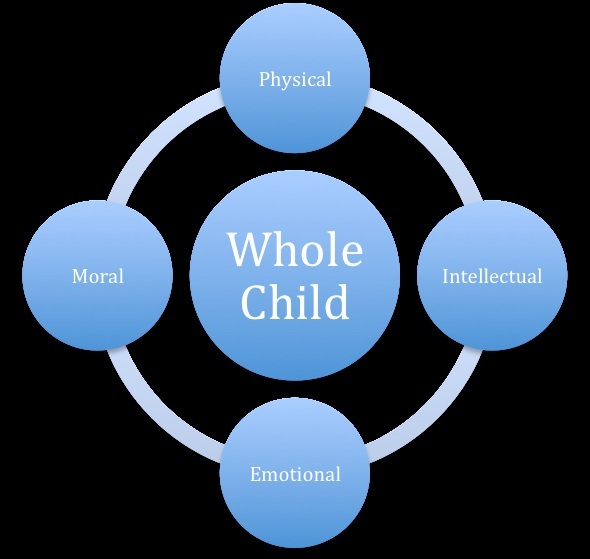What is educating the 'Whole Child'?

Childwisechat.com
In looking at what composes the entire child, we can refer to the 40 Developmental Assets to guide us in the healthy development of youth in our communities.
But before we look at the assets, we should ask ourselves why is it incumbent of educational institutions to consider educating the whole child. Why has it become the responsibility of schools to ensure the development of any other domains beside the intellectual side of a child? To answer this question ask yourself the following questions:
-
If a child is hungry, will they be able to learn?
-
If a child did not sleep the night before because they were homeless, will he/she be able to concentrate?
-
Will they care?
-
When you are tired, hungry or struggling with life problems, how do you feel?
Typically, an average district has greater than 50% of students who are socially and/or economically disadvantaged
Table of School Districts and their percentage of students tested in 2012 that were Socially and/or Economically Disadvantaged.

These statistics demonstrate why it has become imperative to address all needs of our students.
-
Do you feel lost when you are out of work for a day or two?
-
Have you ever been at an airport waiting for someone to pick you up and they were late? How did you feel? Anxious, upset, ...What if you didn't have any money and could not take a taxi, then how would you feel?
Homeless and Foster children face this type of anxiety quite frequently at school because of their home environments. Frequent absences or school changes create educational challenges for these youth.
-
4 out of 10 Foster children move 3 or more times
- 20% are moved more than 5 times.
-
70% of Homeless children switch schools two or more times a year.
Many of these kids are lost in a system that does not meet their needs and who are drowning academically.
Educating our children must include developing every side of our children to create not only academically successful children but growing caring, healthy and successful adults.
The EWCATA Keys:
- Developing assets in our children to reduce risky behaviors.
- Connecting families to needed resources to help build home stability in a student's life.
- Finding a talent in our youth to build their self esteem.
The Search Institute has conducted extensive research in developing a list of assets that youth need to develop resiliency that will assist them reducing the risk of engaging in risky behaviors such as drugs, alcohol, gangs, and violence.

|
40 developmental assets.pdf Size : 112.574 Kb Type : pdf |